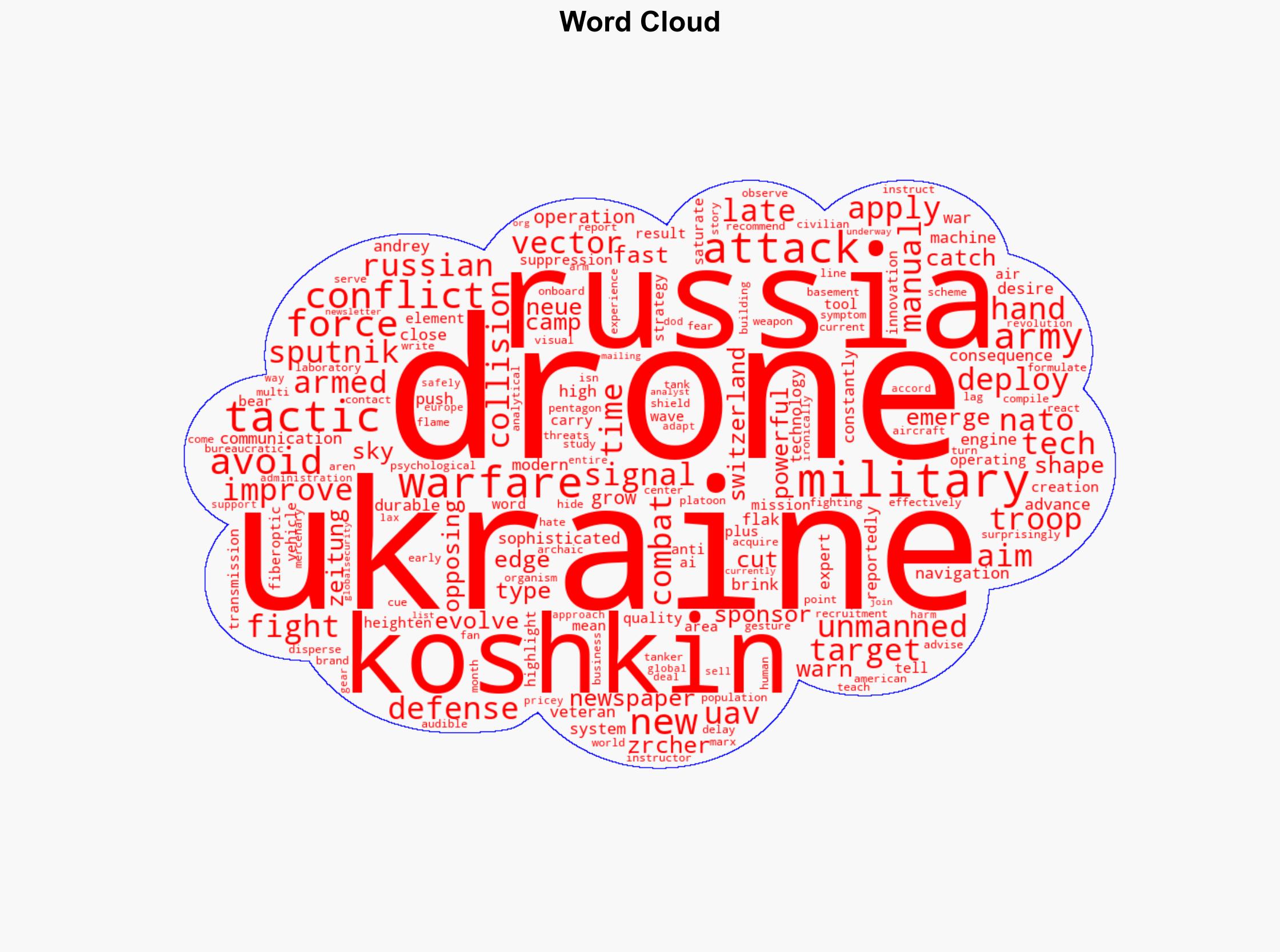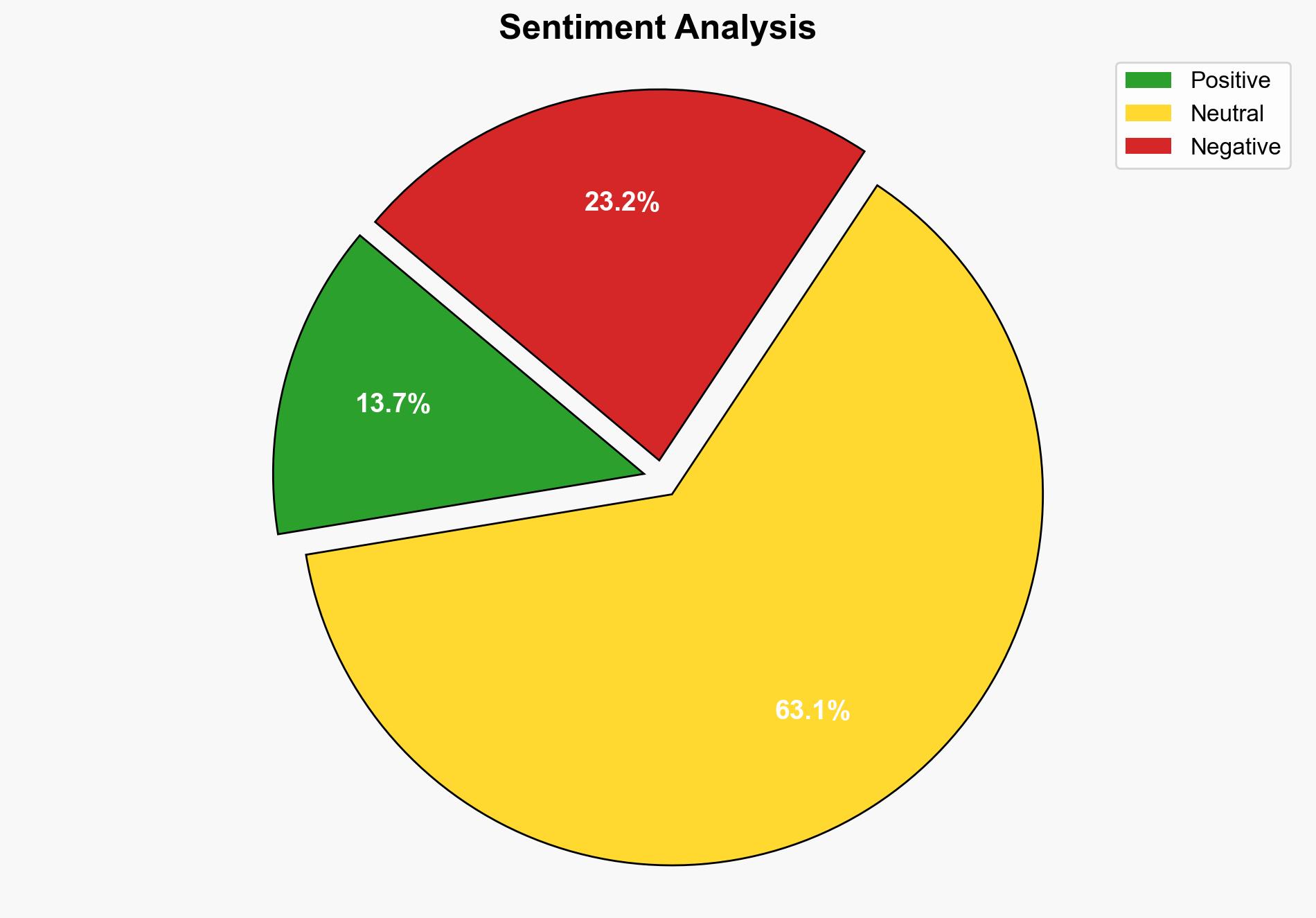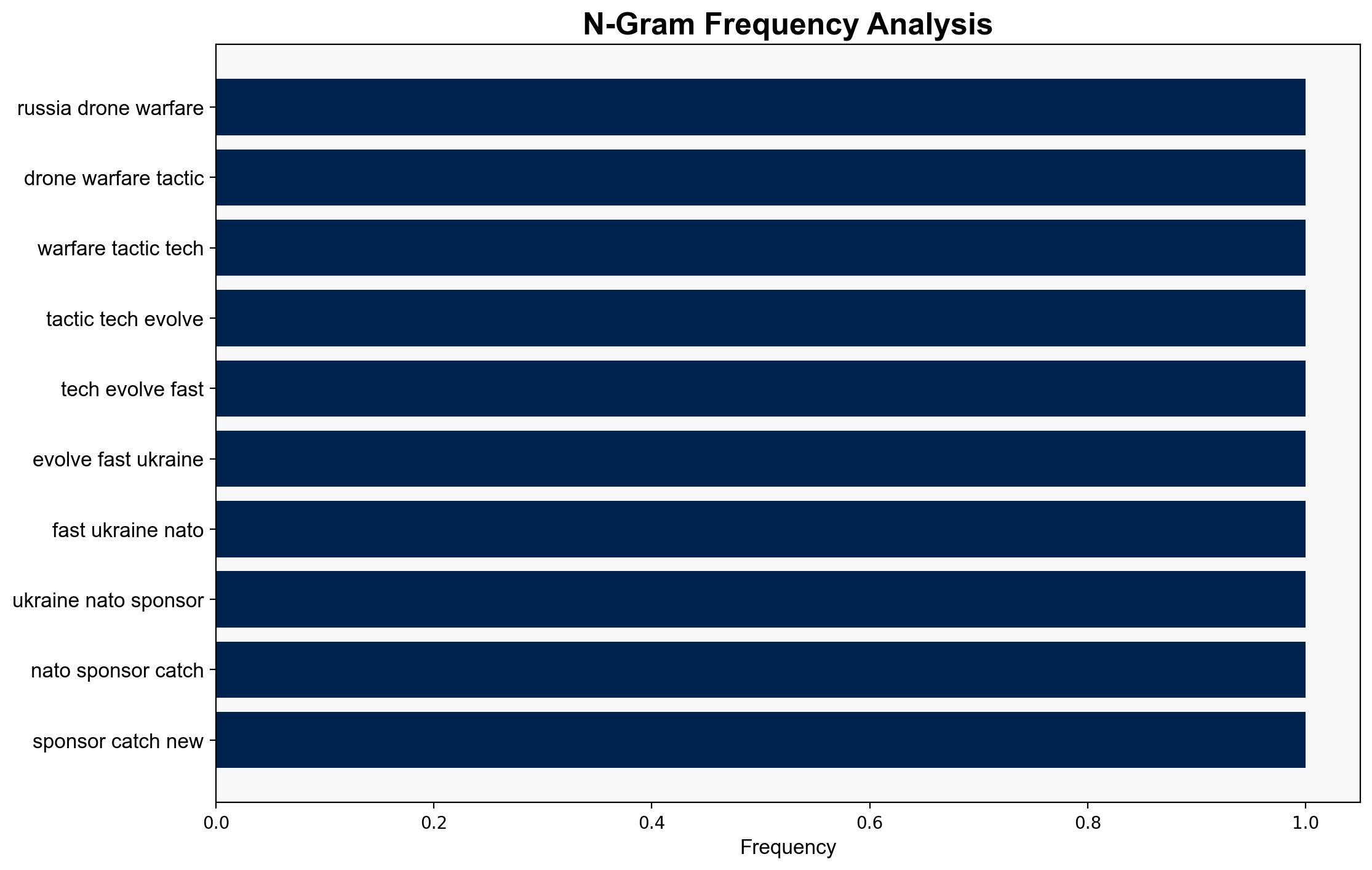Russia’s Drone Warfare Tactics and Tech Evolving Too Fast for Ukraine’s NATO Sponsors to Catch Up – Globalsecurity.org
Published on: 2025-07-14
Intelligence Report: Russia’s Drone Warfare Tactics and Tech Evolving Too Fast for Ukraine’s NATO Sponsors to Catch Up – Globalsecurity.org
1. BLUF (Bottom Line Up Front)
Russia’s advancements in drone warfare technology and tactics are outpacing the adaptive capabilities of Ukraine and its NATO allies. The strategic implications of this rapid evolution include heightened military pressure on Ukraine and potential shifts in regional power dynamics. It is crucial for NATO to accelerate its technological and tactical responses to mitigate these threats.
2. Detailed Analysis
The following structured analytic techniques have been applied to ensure methodological consistency:
Cognitive Bias Stress Test
Potential biases were identified in the assessment of Russia’s technological capabilities. Red teaming exercises highlighted the need to consider underreported advancements in Russian drone technology.
Bayesian Scenario Modeling
Probabilistic forecasting indicates a high likelihood of increased drone deployment by Russia, with potential escalation in conflict intensity if countermeasures are not implemented.
Network Influence Mapping
Analysis of influence networks reveals Russia’s strategic partnerships and supply chains that facilitate rapid technological advancements in drone warfare.
3. Implications and Strategic Risks
The sophistication of Russian drones poses significant military threats, potentially overwhelming Ukraine’s defenses and destabilizing regional security. The integration of AI and fiberoptic communication in drones enhances their operational effectiveness, increasing the risk of cyber vulnerabilities and information warfare. The psychological impact on civilian populations could lead to humanitarian crises and displacement.
4. Recommendations and Outlook
- Accelerate the development and deployment of advanced anti-drone technologies within NATO member states to counter Russian advancements.
- Enhance intelligence-sharing frameworks among NATO allies to improve situational awareness and response times.
- Scenario-based projections:
- Best Case: NATO successfully adapts its strategies, neutralizing the threat and stabilizing the region.
- Worst Case: Continued Russian advancements lead to significant territorial gains and increased regional instability.
- Most Likely: A prolonged conflict with intermittent escalations, requiring sustained NATO engagement and adaptation.
5. Key Individuals and Entities
Andrey Koshkin
6. Thematic Tags
national security threats, cybersecurity, counter-terrorism, regional focus





